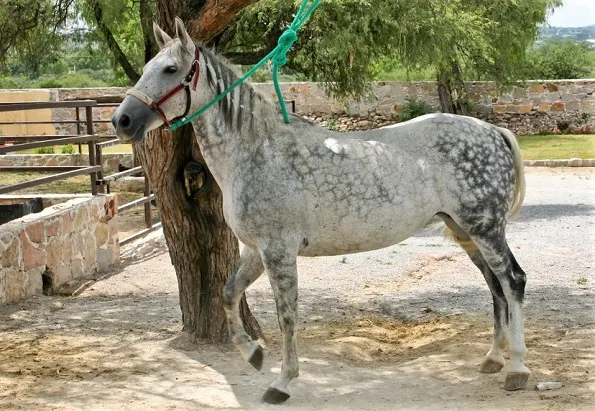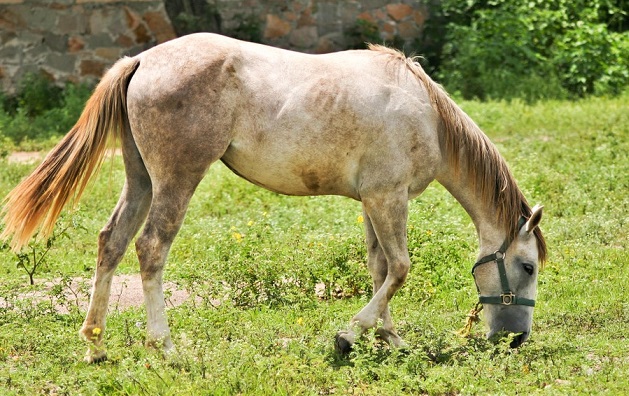From stunning beaches to ancient ruins, Mexico is full of beautiful and historic sites. Though horses have played an important part of life in Mexico, there are only two breeds native to the country.
The two native Mexican horse breeds are the Azteca and Galiceño. Spanish horses first arrived in Mexico in the 1500s and soon became a valuable addition to the country. These Spanish horses played an important role in the development of the Azteca and Galiceño breeds.
Horses are now a celebrated part of Mexican culture. They have played an important role in many aspects of life including agriculture, construction, ranch work, mining, tourism, and transport. Horses are also a popular form of entertainment, as they take part in many festivals, celebrations, and Charrerías (Mexican rodeo) across the country.
1. Azteca

Ger Aguilar / Shutterstock.com
With athleticism, heart, and elegance, the Azteca breed is the National Horse of Mexico. Developed in 1972, the breed is relatively new.
The Azteca horse was created as a mount for charros, Mexico’s traditional horsemen. They needed an athletic, agile horse, capable of working cattle and perform intricate reining maneuvers. By crossing Andalusians, Quarter Horses and Criollos, the Azteca breed was born.
The Azteca proved to gain the best traits from all three breeds. They are compact yet powerful, with top-notch athleticism, agility, and also speed. Azteca horses are intelligent, hard-working horses that love to be around people.
In 1992, the International Azteca Horse Association was formed and the breed began to develop international recognition. Azteca horses in Mexico can not have more than three-quarters of the blood of any one of the three foundation breeds. A subtype of the breed began in America, allowing Paint horses bloodlines.

Ger Aguilar / Shutterstock.com
Azteca horses are a versatile breed, excelling at many different disciplines. Though they are traditionally ranch horses, today they also do much more. Azteca horses are a favorite among trail riders and a popular mount for Charrerías. They also excel at reining, cutting, penning, roping, dressage, jumping, and driving.
Azteca horses have a well-muscled body, arched neck, wide chest, and powerful hindquarters. They typically stand between 14.3 to 16.1 hands tall. Though most commonly gray, they can also be any solid color, with pinto being acceptable in American Azteca horses.
2. Galiceño

Like the Azteca, the Galiceño is a relatively new breed to America, as it first arrived in 1958. Though their numbers used to be in the thousands, there are only around 100 of them left, making them an endangered horse breed.
The Galiceño horse got its start over in Spain, as they are descendants of the first sixteen horses to arrive in Mexico with Hernando Cortes in 1519. Among these horses were the Galician ponies, which along with Portuguese Garrano ponies, were the foundation of the Galiceño breed.
Galiceño ponies have been prized throughout Mexico for their intelligence, endurance, and friendly dispositions. In the 1950s, they were brought over from Mexico to Texas and sold all throughout America as reliable riding mounts for children. They even went on to influence other American breeds, including the Pony of the Americas.
In 1959, the Galiceño Horse Breeders Association (GHBA) was formed in Texas. In addition to the GHBA, Galiceño horses can also register with the American Indian Horse Registry.
Galiceños are hardy, durable horses that are also easily trainable. They have a refined head, a slightly arched neck, and a well-muscled body. Galiceños are versatile horses, excelling in both riding and driving. Though they only stand between 12.2 to 14.1 hands tall, they make trusty riding companions for both children and adults.
Source: horseyhooves.com








